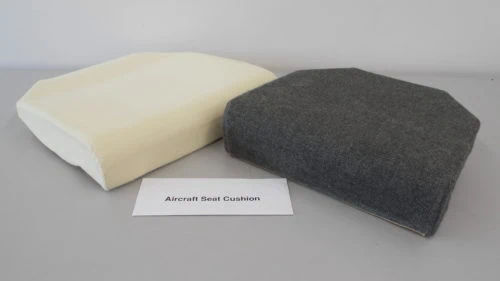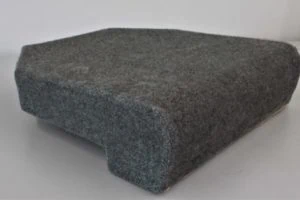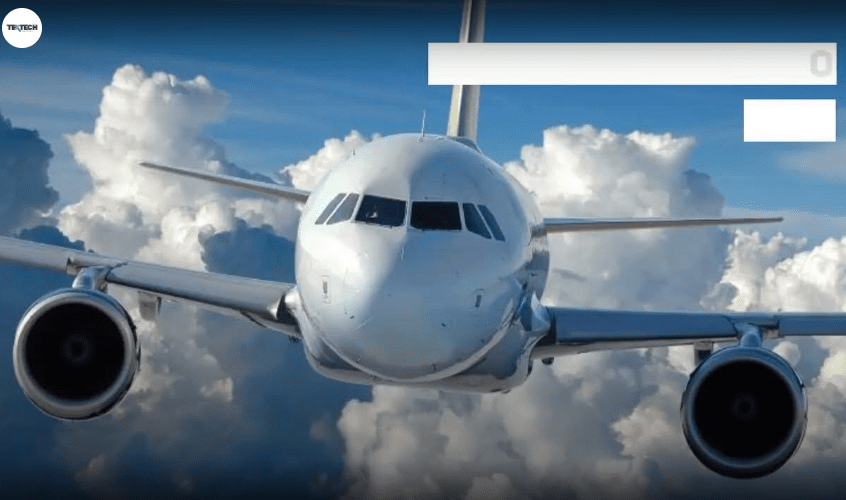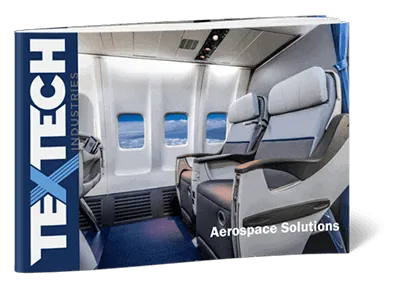
At Tex Tech Industries, we specialize in the development and manufacturing of high-performance fire blocking materials for seats in the aircraft industry. The efficiency of our Fire Blockings lies in specially designed flame-resistant fibers. This was uniquely formulated through extensive research and development to deliver maximum durability and enhanced thermal resistance.
We draw on over three decades of industry experience to manufacture fire blocking layers that exceed the various stringent standards and regulations of the aerospace industry.
What You Need to Know About Fire Blocking Materials
All nonmetallic seat parts and components must meet the requirements of FAR 25.853. The use of fire-blocking textiles is further stressed in FAR 121, Amendment 184, which stipulates that seat covers must comply with 25.853(c). Compliance with these specifications requires the use of specialized fabric to encapsulate the seat foam material.
Our fire blocking layers are custom-made and can be used on a variety of seating styles and arrangements for the crew, first-class, business, class, and economy. The material’s durability has been thoroughly tested and proven to eliminate or control the spread of fires and fire-borne toxins. Additionally, our solutions are resistant to wear, abrasion, and punctures, which can all expose the flammable underlying foam layer.
Tex Tech’s fire-blocking layer is constructed from inherently fire-resistant fibers with a woven scrim component on one side for added abrasion resistance. All non-woven materials, including blending, felting, and finishing, are produced by our in-house manufacturing team and are strictly controlled through our quality assurance procedures and processes. We can also modify the material thickness and other properties as per the desired specifications.
Our fire blocking layers are also among the lightest on the market, with weights ranging from 3.5oz./sq.yd (105 g/m2) to 10.9 oz./sq. yd. (370 g/m2) and thicknesses ranging from 0.030 in (1.14 mm) to 0.070in (1.778 m) depending on the application.
Testing Requirements
We thoroughly test all our fire blocking solutions based on various widely adopted specifications for the aerospace, rail, and mass transit industries. This ensures that our products are suitable for use in any international application. Tex Tech’s fire-blocking seat layers currently meet or exceed the following regulations and standards:
US Market
- Aerospace
o FAR 25.8853 (a)
o FAA Smoke Density FAR 25.853 (d)
o AITM 3.0005 Gas Toxicity
o AITM 2.0007B Smoke Density
o BSS 7239 Gas Toxicity
o BSS 7238
o FAR25.853 Heat Release (OSU 65/65) - Rail/Mass Transit
- ASTM E 162
- ASTM E 662
- CA 133
- BSS 7239
- FVMSS 302 Flame TS
European Market
- Aerospace
o EASA STDS
o ABD 0031 - Rail/Mass Transit
o BS 476, BS 6853 and EN 45545
Asian Market
- Aerospace
o Smoke Density
o TB/T3237-2010 Clause 4.3 GB/T8323.2-2008
o Oxygen Index
o GB/T 5454-1997
o Burn Behaviour
o UIC564-2:1991
o Toxicity Gas Analysis
o TB/T 3237-2010
Learn More in Our eBook
With our knowledge and experience of high-performance materials and fiber blending, our team can design and manufacture fire-resistant materials to meet the most demanding applications in the aerospace industry. Learn more about our aerospace solutions in our eBook here.
Download the Aerospace Solutions Data Sheet
Download our guide today for a handy cross-section with insight into how and where our fire-blocking materials are implemented throughout an aircraft.
Download Now

